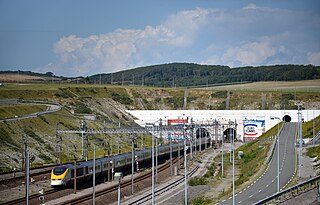
The Channel Tunnel, sometimes referred to as the 'Chunnel', is a 50.46-kilometre (31.35 mi) undersea railway tunnel, opened in 1994, that connects Folkestone with Coquelles beneath the English Channel at the Strait of Dover. It is the only fixed link between the island of Great Britain and the European mainland. At its lowest point, it is 75 metres (246 ft) below the sea bed and 115 metres (377 ft) below sea level. At 37.9 kilometres (23.5 mi), it has the longest underwater section of any tunnel in the world and is the third-longest railway tunnel in the world. The speed limit for trains through the tunnel is 160 kilometres per hour (99 mph). The tunnel is owned and operated by Getlink, formerly Groupe Eurotunnel.

Folkestone is a port town on the English Channel, in Kent, south-east England. The town lies on the southern edge of the North Downs at a valley between two cliffs. It was an important harbour, shipping port & fashionable coastal resort for most part of the 19th and mid 20th centuries.
Getlink, formerly Groupe Eurotunnel, is a European public company based in Paris that manages and operates the infrastructure of the Channel Tunnel between England and France, operates the LeShuttle railway service, and earns revenue on other trains that operate through the tunnel.

The Channel Tunnel fire of 18 November 1996 occurred on a train carrying Heavy Goods Vehicles (HGVs) and their drivers through the Channel Tunnel from France to the United Kingdom (UK). The fire was seen on the train as it entered the tunnel and, in line with the policy at the time, an attempt was made to drive to the UK where the fire would be dealt with. However, after an indication of a serious problem with the train, the driver stopped at 21:58 CET, 19 kilometres (12 mi) into the tunnel. The locomotive and passenger coach were rapidly enveloped in thick smoke, and the locomotive lost power. Reconfiguration of the tunnel ventilation systems was delayed, but by 22:30 all passengers and crew were safe, in the service tunnel, with minor injuries.
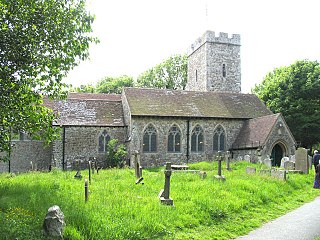
Cheriton is a northern suburb of Folkestone in Kent. It is the location of the English terminal of the Channel Tunnel as well as of the major army barracks of Shorncliffe Camp.

Operation Stack was a procedure used by Kent Police and the Port of Dover in England to park lorries on the M20 motorway in Kent when services across the English Channel, such as those through the Channel Tunnel or from the Port of Dover, are disrupted, for example by bad weather, industrial action, fire or derailments in the tunnel.

Folkestone West railway station is on the South Eastern Main Line in England, serving the western area of Folkestone, Kent. It is 69 miles 22 chains (111.5 km) down the line from London Charing Cross. All trains that call are operated by Southeastern.

LeShuttle is a railway shuttle service between Calais in France and Folkestone in United Kingdom. It conveys road vehicles and passengers by rail through the Channel Tunnel. Freight vehicles are carried in separate shuttle trains hauled by the same locomotives, that also contain a passenger carriage, known as the Club Car.

The Eurotunnel Class 9 or Class 9000 are six-axle high-power Bo′Bo′Bo′ single-ended electric locomotives built by the Euroshuttle Locomotive Consortium (ESCL) of Brush Traction and ABB. The class was designed for and is used exclusively to haul the LeShuttle road vehicle services through the Channel Tunnel.
The Eurotunnel Class 0031 0-4-0 diesel locomotives were built by the Hunslet Engine Company between 1989 and 1990 for Channel Tunnel construction work and now used for maintenance duties. They were originally built as 900 mm gauge, and were subsequently rebuilt by Schöma to 1,435 mmstandard gauge in Germany between 1993 and 1994.

Coquelles is a commune in the Pas-de-Calais department near Calais in northern France.
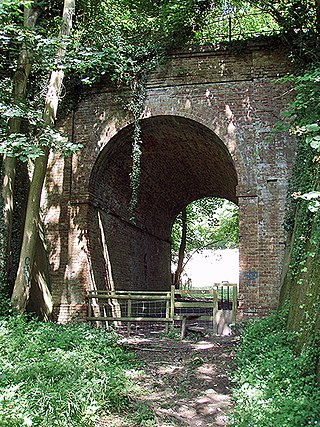
The Elham Valley Railway was a line connecting Folkestone and Canterbury in Kent, England. It opened between 1887 and 1889 and closed in 1947.

In rail transportation, a rolling highway or rolling road is a form of combined transport involving the conveying of road trucks by rail, referred to as Ro-La trains. The concept is a form of piggyback transportation.
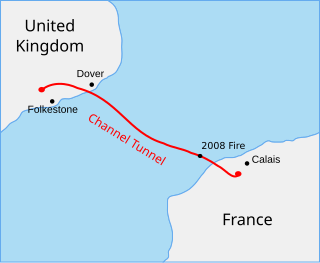
On 11 September 2008, a France-bound Eurotunnel Shuttle train carrying heavy goods vehicles (HGVs) and their drivers caught fire while travelling through the Channel Tunnel. The fire lasted for sixteen hours and reached temperatures of up to 1,000 °C (1,830 °F).
Europorte Channel is a rail freight train operator which operates rail freight services between France and the United Kingdom through the Channel Tunnel. It is a subsidiary of Europorte.

A car shuttle train, or (sometimes) car-carrying train, is a shuttle train used to transport accompanied cars (automobiles), and usually also bicycles and other types of road vehicles, for a relatively short distance.

The Eurotunnel Calais Terminal is a railway terminal built for the transport of road-going vehicles on specially constructed trains through the Channel Tunnel. The station is located in the commune of Coquelles in the Pas-de-Calais department near the city of Calais. It is the terminal for the France and by extension the rest of Continental Europe. On the British side is the Eurotunnel Folkestone Terminal located at Cheriton, near Folkestone. The passenger service building at the Eurotunnel Folkestone Terminal is called the Charles Dickens Terminal, named for the British author Charles Dickens.
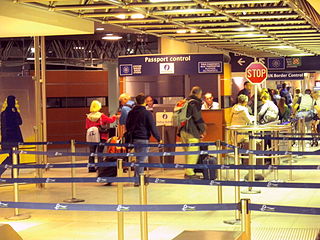
Juxtaposed controls are a reciprocal arrangement between Belgium, France, the Netherlands and the United Kingdom whereby border controls on certain cross-Channel routes take place before boarding the train or ferry, rather than upon arrival after disembarkation. With the exception of the Eurotunnel Shuttle route, customs checks remain unaffected by juxtaposed immigration controls and continue to take place upon arrival after disembarkation. Belgium, France and the Netherlands are all member states of the European Union and part of the border-free Schengen Area. The United Kingdom, on the other hand, has never participated in the Schengen Area, even when it was a member state of the European Union. As a result, juxtaposed controls aim to increase the convenience and efficiency of border checks when travelling by train or ferry between the Schengen Area and the UK by removing the need for immigration checks on arrival and by streamlining checks on departure. At the same time, juxtaposed controls are intended to detect and prevent illegal immigration. In 2016, there were over 56,000 instances when people were refused entry to the UK at the juxtaposed controls.

Pedal cycles in the Channel Tunnel are normally allowed to cross the Channel Tunnel fixed link between the United Kingdom and France only by using the Eurotunnel cycle service, on board a LeShuttle train. That consists of a minibus and bicycle trailer for six bicycles.

The second use of the TOPS classification Class 21 for locomotives used on the British railway network came through the use of a number of related diesel-hydraulic and diesel-electric locomotives procured following the opening of the Channel Tunnel. The total of 16 locomotives were obtained by two separate operators, with some used for freight, and others to propel service trains and as "Thunderbird" locomotives.




















